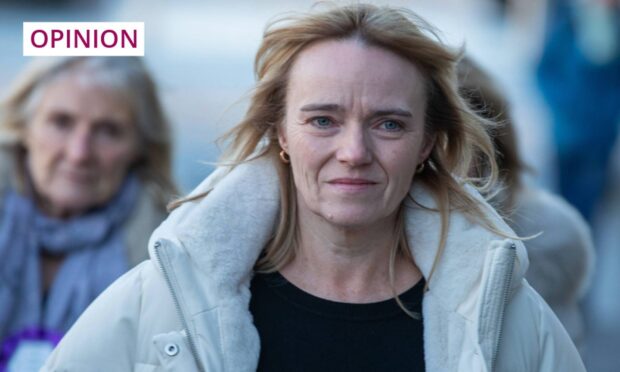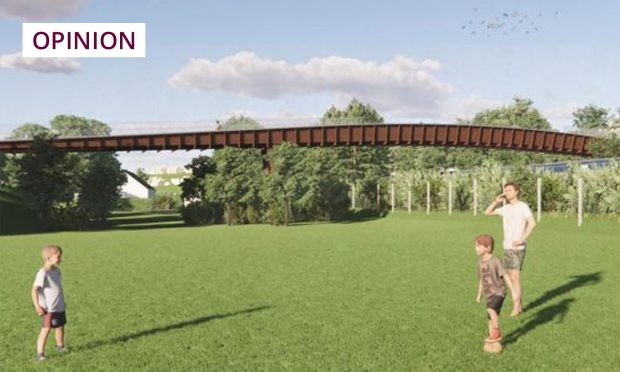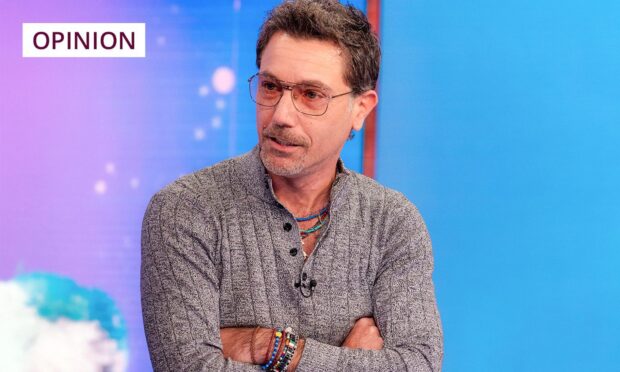By the end of this week, possibly even sooner, Scotland will learn which of its industries, sectors or regions is likely to be sacrificed by Nicola Sturgeon and the Scottish government to appease the Greens.
Details of the SNP’s “cooperation agreement” with the independence-supporting party are expected to be presented for approval to Scottish Green members by August 20, with a vote due on August 28.
The arguments against any further Green encroachment into government business have been made strenuously in recent weeks, with alarm growing that this unrepresentative band of extremists will exert excessive control over our lives.
But Nicola Sturgeon is desperate to bring Patrick Harvie and his colleagues on board to boost her minority regime’s mandate for another independence referendum.
And forfeiting the interests of Scots seems to be a price she is prepared to pay.

So now we must all wait and see what she considers expendable – and who, because hundreds of thousands of jobs, and livelihoods, are at stake.
Green pet hates include any form of road improvement.
In their sights are the dualling of the A9 and A96, the two key routes between Inverness and Perth, and Inverness and Aberdeen.
These are upgrades that would undoubtedly cut the carnage of road accidents but fall foul of sustainable transport campaigners.
Investment in Highland road infrastructure is also vital for the local economy and to help achieve a ‘level playing field’ between the north of Scotland and the central belt, civic leaders told The Courier this week.
Green party blind to rural transport needs
They have urged the SNP to keep its promise on dualling the two thoroughfares and not succumb to “scaremongering” about traffic from eco lobbyists, who don’t understand that remote areas do not always have access to public transport.
Communities must have a network that “balances environmental, economic and social needs”, said Professor Todd Walker, principal and vice-chancellor of the University of the Highlands and Islands.
But Nicola Sturgeon has so far appeared willing to put Green demands ahead of those of voters in the north.
Already, she has signalled that the Nationalists’ economic driver since the 1970s – North Sea oil or “Scotland’s gold” to previous generations of Nats – is now superfluous to Scotland’s requirements.
1. Oil & Gas supports thousands of jobs in Scotland so our transition away from fossil fuels must be a just one. But the climate emergency demands that it happens at pace. We cannot ignore the concern that drilling for new oil is not compatible with protecting the planet..
— Nicola Sturgeon (@NicolaSturgeon) August 12, 2021
Last week she asked Boris Johnson to “reassess” the licence for the proposed Cambo oilfield off Shetland, citing the “climate emergency” in a nod to her Green pals.
But while the UK is committed to transitioning to lower emissions and cleaner renewable energy, we will remain dependent on fossil fuels.
Abandoning Cambo would increase our reliance on imported oil and gas, pushing up fuel prices and our carbon footprint.
It would also cause job losses, says the chief executive of industry body Oil & Gas UK, Deidre Michie.
What other sectors are at stake?
Some 100,000 jobs rely on the industry, believed to be the main target of the Scottish Greens, who spelt out its demise in their election manifesto in May.
If Nicola Sturgeon is ready to accept an employment blow on this scale, other, smaller sectors will be nervously looking over their shoulders as they await their fate.
Also jittery are the nation’s food producers, farmers and fish farmers, whose production methods, however tightly regulated, do not compute with a movement opposed to their very existence.
Green politicians are clueless about modern farming practices
Farmland will be turned over to rewilding projects, tree planting and “species reintroductions”.
The Greens’ manifesto pledges it will make farmers farm in “better ways”, but Green politicians are clueless about modern farming practices.
The party’s co-leader, Lorna Slater, didn’t even know that the salmon farms her party seeks to ban – and which deliver £2 billion annually to the country’s coffers – are located on the west coast.
Some 12,000 people are employed in the sector, directly and indirectly, yet they, like the oil and gas workforce, are apparently dispensable.
Do farmers and fish farmers contribute enough to the Scottish national interest to merit safeguarding by Nicola Sturgeon?
They must wait to find out.
A report in the Guardian last week said disputes over fish stocks and marine conservation were among the issues delaying the SNP-Green pact.
Does Nicola Sturgeon have SNP backing?
This will have sent shivers down the spines of the ordinary folk and their families who now fear for their future.
And all in the name of an independence battle that the majority of Scots don’t want right now, if ever.
Does Nicola Sturgeon even have backing in her own party for a Green vision of Scotland that would rewind the clock on progress?
What do senior players with rural constituencies, such as finance minister Kate Forbes, have to say?
Much of Scotland risks being held hostage to the whims of an organisation that has just 7,500 members and secured only 4.69% of votes in May’s election.
We do not yet know the outcome of the coalition negotiations but the omens are that the Nationalists are about to sell their soul, and Scotland’s, to the Greens.












